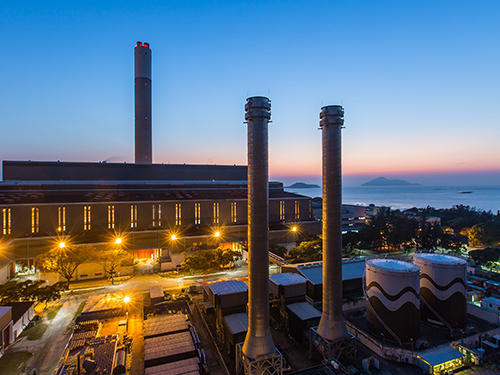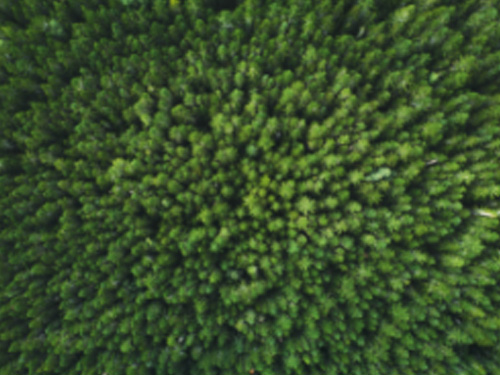GRI 304-3
GPSC has carried out various reforestation projects in collaboration with external stakeholders and suppliers, as detailed below.
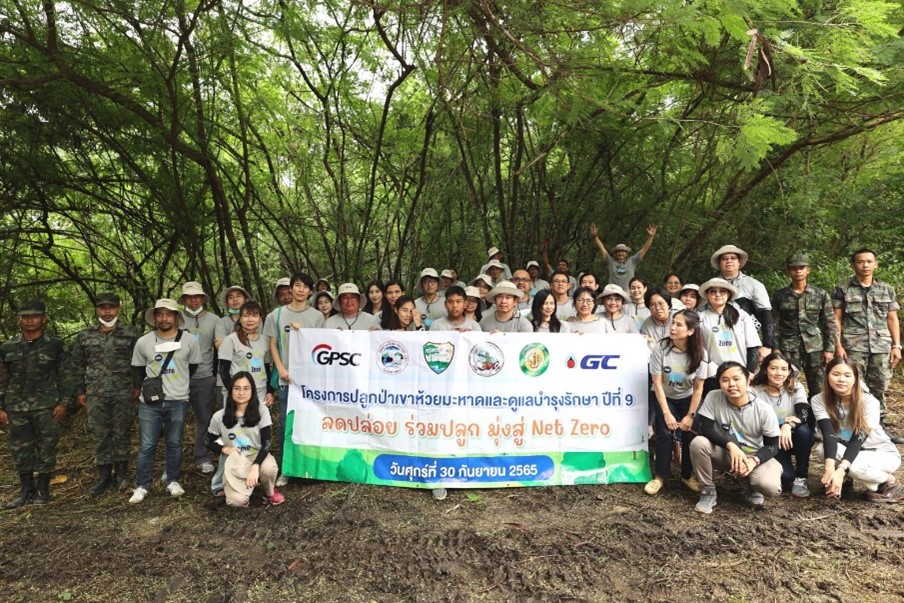
Khao Huai Mahat Forest Restoration Project in Rayong:
Restoring ecological balance and enhancing carbon sequestration towards net zero emissions
GPSC joined forces with Map Ta Phut Municipality and members of the Khao Huai Mahat Forest Restoration and Water Conservation Group to carry out Khao Huai Mahat Forest Restoration Project Year 9 in Huai Pong Sub-district, Muang District, Rayong in collaboration with various parties, such as local agencies, communities, suppliers, and over 100 GPSC employee volunteers. The objectives were to revitalize forested watersheds, increase the biodiversity of the local flora, and restore ecological balance in residential and industrial areas for harmonious co-existence, as well as develop Rayong into an eco-industrial city. The project also enhanced the carbon dioxide capturing capacity of the forest – a key mechanism in GPSC’s environmental management in an effort to achieve net zero emissions by 2060.
The project focused on expanding green areas by planting additional trees in a 7-rai degraded forest, known as Plot 3. To enhance the biodiversity, a total of 15 species of plants were introduced, consisting of 13 wild species known for their ability to absorb carbon, totaling 900 plants, and two groundcover herb species, comprising 100 plants. The estimated cumulative amount of carbon absorbed by Plots 1 and 2 planted earlier combined with Plot 3 was 524 tonsCO2eq. This project has not only restored the ecosystem but also brought income to surrounding communities, as the herbs grown can be used in the production of various products, thus generating value added for them in a continuous and sustainable way.
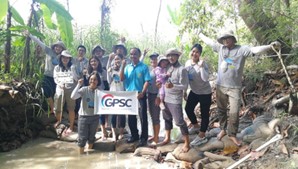
Check Dam Construction Project Year 8:
Increasing green areas in the community forest of Khao Phu Don-Huai Mahat, Rayong
GPSC carried out Check Dam Construction Project Year 8 to restore the ecosystem of the community forest of Khao Phu Don-Huai Mahat in collaboration Ban Chang Municipality, Ban Chang District, Rayong Province. Organized for the eighth consecutive year, the project sought to enhance the quality of the water resources and restore the ecosystem to promote the vitality of the forest. The project was made possible thanks to the cooperation of the government sector, private businesses, and communities, and since 2015, a total of 152 check dams have been constructed in the community forest of Khao Phu Don-Huai Mahat, Rayong Province, by local government agencies, employee volunteers, and local residents participating in the activities as part of this project.
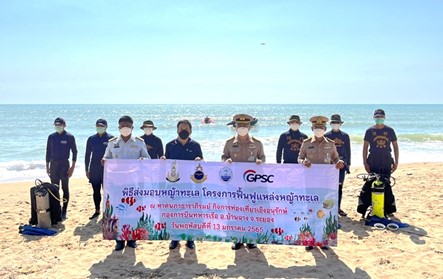
Seagrass Planting Project
GPSC Group, the First Naval Area Command and the Marine, and Coastal Resources Research Center, the Eastern Upper Gulf of Thailand (EUMCRC), have jointly conducted research to identify suitable areas for the planting and propagation of seagrass, which is believed to help absorb carbon dioxide and restore marine ecosystems and resources. The two trial plots for the project are 1) Napha Thara Phirom Beach – an eco-tourism business under the Naval Air Division in Sattahip District, Chonburi, with 5,000 tufts planted in an area of 3 rai; and 2) Koh Kham under the First Naval Area Command in Sattahip District, Chonburi, with 5,000 tufts planted in an area of 3 rai. This project is expected to reduce GHG emissions by 66 tonsCO2eq/year, according to the calculation methodology of the Thailand Greenhouse Gas Management Organization (Public Organization). Additionally, GPSC has planned to consistently conduct surveys and collect academic data related to carbon sequestration in seagrass ecosystems and biodiversity for research purposes.

